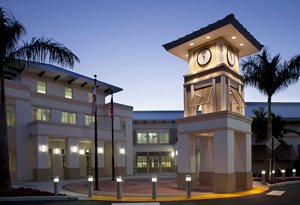Wellington has begun setting the table for development of the village’s first annexation north of Southern Blvd., splitting a 258-acre parcel known as the Sluggett Property and Entrada Acres into commercial and residential zones of roughly similar sizes.
Meeting Wednesday, July 17, the village’s Planning, Zoning & Adjustment Board unanimously approved changes to Wellington’s comprehensive plan and zoning modifications that pave the way for what happens next.
Affirmative voting by affected landowners in March set up the annexation of the tract close to Southern and Seminole Pratt Whitney Road, Wellington’s northernmost venture in its history.
In public comments at the meeting, Jason Hovde, pastor of Oasis Church, part of the recently annexed area, said he supports the plans.
“All of that is good for our church and bringing more traffic around us and opportunities to minister to people,” he said. “I’m really excited to see what’s going to happen.”
Area resident Bob Rubbio expressed concern about traffic and increased costs that can ripple across the area if building happens and property values rise.
“At my age, my main concern is the taxes,” he said.
For Wellington, it marks one more step in off-and-on efforts to expand its territory and tax base.
When Wellington became a municipality in 1995, it covered 28.7 square miles with a population of about 28,000 people. Since 1998, the village has conducted 26 annexations to expand to 45.5 square miles with a current estimated population of about 65,000, a staff presentation noted.
Now the focus is on the latest turf coming into the fold. About 124 acres on the southern and western edges of the parcel would be devoted to commercial development, essentially facing the two main roads around it, with 126 acres slightly further from the thoroughfares assigned to housing.
“It will help establish a balance of land use,” said Bob Basehart, the village’s growth management director.
The housing designation is Residential E, which allows five to eight dwelling units per acre. A village staff report highlighted a need for multi-family housing.
“There currently are no multi-family housing opportunities available anywhere in Loxahatchee or in the unincorporated county areas near the subject site,” the report stated. “The development of the commercial portions of the annexed area will generate additional demand for housing, which presently cannot be found within a reasonable distance.”
At this stage, the PZA board was not approving specific development plans for either housing or commercial purposes, but setting down big-picture parameters. Developers could ask for further tweaks to suit particular projects as they come before the village, and at least a dozen builders have begun making preliminary inquiries, staff members reported.
No shovels can yet be put in the ground based on the board’s moves alone.
Michael Drahos, a former Wellington councilman who became vice chair of the PZA board at the July 17 meeting, said this is largely a procedural step.
“We’re following up on the will of the voters, which was in support of this,” he said.
John Bowers was chosen as chair of the board, although he was not at the meeting.
A market study by Zabik & Associates forecasts a local economic impact between $1 billion and $1.5 billion by the time the annexed property is built out, which could be within a decade. It could involve up to 1,000 direct or indirect jobs during construction, and contribute more than $350,000 to Wellington tax coffers, the study found.
One measure that PZA Board passed would make it easier for the village to accommodate cell phone towers in the newly annexed area.








